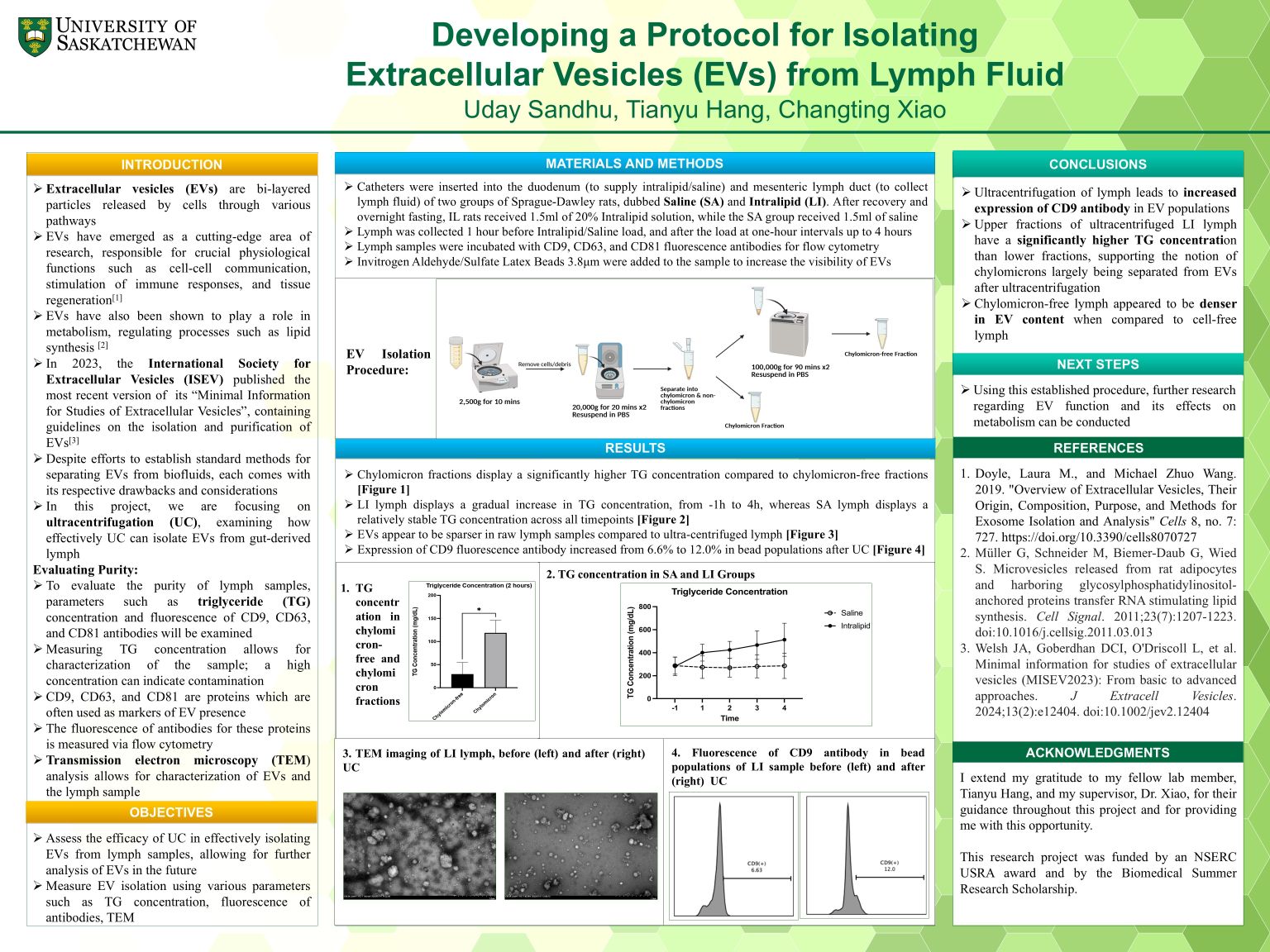
Developing a Protocol for Isolating Extracellular Vesicles from Lymph Fluid
Uday Sandhu
Extracellular vesicles (EVs) are bi-layered particles responsible for important physiological functions. Their link to metabolism and their exciting potential applications in medicine have sparked recent interest. This interest has necessitated protocols to be established for their isolation and study. The goal of this project is to develop an effective method for the isolation of EVs from gut-derived lymph fluid, specifically evaluating ultracentrifugation (UC) as an isolation method. Lymph was collected from the mesenteric lymph duct (MLD) of Sprague-Dawley rats before and after they had received either an Intralipid or a Saline load of 1.5 millilitres. The lymph was then centrifuged at 2,500g for 10 minutes to remove cells and debris. This cell-free lymph was centrifuged twice at 20,000g for 20 minutes, and separated into two fractions: chylomicron (upper layer) and chylomicron-free (lower layer). Finally, the chylomicron-free sample was ultracentrifuged twice at 100,000g for 90 minutes to purify the EVs. To assess the purification, parameters such as TG concentration and fluorescence of CD9, CD63, and CD81 antibodies are measured. Additionally, transmission electron microscopy (TEM) analysis allows for visualization of EV purification. This project found that centrifugation and ultracentrifugation can effectively enrich EVs in lymph fluid.
